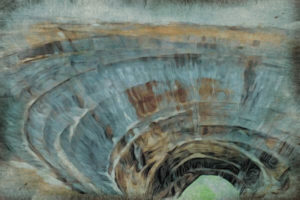Or: Waiter, There’s a Fly in My Urinal

In a More Perfect World…
Public restrooms are a serious challenge to keep clean. The men’s room is, unsurprisingly, a huge problem.
From my unscientific research over the years (um, using public bathrooms), a shocking number of guys simply seem to lack common courtesy or even decent aim. I’m not the bathroom police, and I’m not a puritan, but it’s really not difficult to keep things clean.
We’re faced with a number of design challenges in public restrooms besides those dealing with courtesy and aim. Here are a few of the solutions that our proud bathroom engineers have come up with:
- Toilet seats: Ever noticed that toilet seats in public restrooms are about the only ones that are U-shaped? Yeah, that's done entirely because too many men splash or don’t bother to aim, and very few clean up after themselves.
- Flies in the toilet: A lot of urinal manufacturers have started constructing their urinals with a fly etched into the back of the urinal. Guys using the urinals tend to aim straight at them. Some companies have started selling special stickers for home use as well. I've heard that they reduce spillage by 80% (but that seems like a somewhat suspicious figure, if only for the difficulty in measuring it). They’ve also employed etchings of bees and dots for the target practice.
- Paper toilet seat liners: These flimsy little things provide psychological reassurance more than any real protection. Toilet seats are designed to make a poor surface for bacteria to nest on and, well, the paper liners are a better surface for that. On top of that, your skin makes a pretty great barrier to bacteria.
- Air dryers: It turns out that air dryers aren't better than paper towels. Air dryers spray germs everywhere. If you've washed your hands well, of course, it shouldn't matter. But how many people don't wash well? (A horrifyingly large number.) On the flip side, though, those air driers are much better for the environment, so there's a tough tradeoff there.
So, yeah, there we have it. This has been your public servant reporting, and imploring you to wash your hands well.
_________
Quotable
Well, Yard Ramp Guy—I’ve missed our alphabet thing. Glad for the return:
“I always have a quotation for everything—it saves original thinking.”



